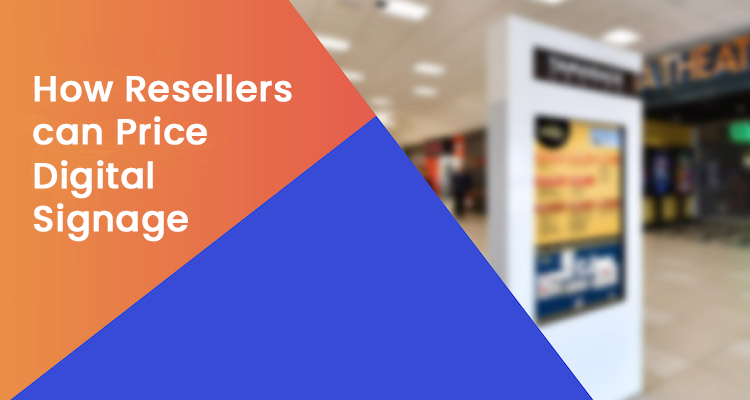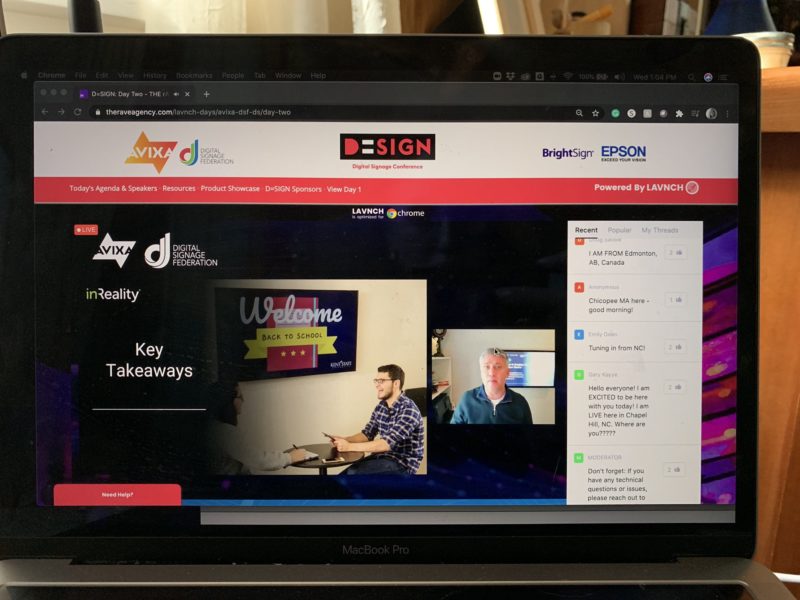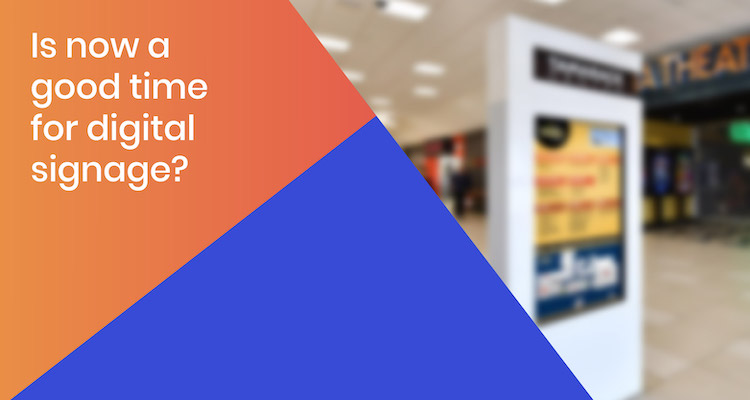How Resellers Can Price Digital Signage
THIS IS A PROMOTED POST FROM MVIX DIGITAL SIGNAGE

By Lillyan Wamaitha
Mvix Digital Signage
Digital signage presents a multitude of opportunities for AV integrators and other managed service providers. From financial institutions and corporate offices to educational institutions, health care, manufacturing, cinemas, restaurants, retail stores, transport, car dealerships, fitness centers and salons — the sales opportunities for digital signage resellers are unlimited.
Additionally, the use of digital signage is gaining traction across the world, with the digital signage industry expected to grow at a CAGR of 7.3% from 2019 to 2025. Within this forecast duration, the global shipment of commercial-grade monitors is set to exceed 40 million units. This means managed service providers looking to increase their profit margins should consider adding digital signage solutions to their line of services.
However, to make the most out of digital signage reselling, it is important to choose a pricing model that fits your business and works well for your target customers. A good pricing model maximizes your revenue and makes it easier to grow. On the other hand, a poor pricing model can damage a reseller’s growth and profitability. To help you determine the most appropriate option for your managed services offering and understand your different options, we listed out the pros and cons of each of the different managed services pricing models:
1. Value-Based Pricing
This is a flat-fee pricing model where resellers offer their digital signage services as a single package. Resellers looking to go this route must conduct in-depth research before providing custom-quotes to buyers. Whether you’re looking to set up a long-term or short-term contract for the client, analyze their needs carefully, and come up with a unique plan that meets their needs. You should structure your quote in such a way that it doesn’t undersell your services or lock your clients from growing their businesses.
Pros
- It has great potential for increasing revenue and securing long-term contracts.
- It frees resellers from hourly constraints and makes it easier to maintain margins.
- Large enterprises, institutions and businesses find it more appealing.
Cons
- It requires more time and resources to provide the best quotes to customers.
- Some customers might not need all services included in the offer.
2. Per-Device Pricing
The per-device model is fairly simple and makes it easier for both resellers and customers to understand what’s covered in the offer and the exact costs. Integrators set a price for each device supported in the digital signage network.
For instance, you can set a flat-rate fee of $49 per screen, $239 per server, $19 per network printer, and $49 for every digital signage player. This model makes it easier to structure quotes for your customers and adjust the monthly fees as the client’s needs increase.
Pros
- Clients can understand and determine what they pay for.
- Allows easier scaling with the client’s needs
Cons
- Integrators might overcharge clients who require less digital signage support and maintenance services.
- It emphasizes on price rather than the value of services.
3. Tiered Pricing
The tiered model is arguably the most popular pricing strategy among IT managed service providers. In this model, the reseller bundles several digital signage services and sells them as a package. As the number or quality of service offered increases, so does the price charged increase. For instance, a digital signage reseller might charge higher for a service package that includes on-site maintenance than one that’s limited to remote support.
Pros
- It gives customers multiple service options to select.
- When executed well, clients will upgrade to higher tiers.
- More customers can find a package that meets their needs.
Cons
- Customers might go for the cheapest model before trusting your services.
- It might be confusing and hard for customers to understand what services are included in a particular tier.
4. Per-User Pricing
This model follows the same concept as per-device pricing, but the price covers individual users rather than devices. Digital signage resellers charge a flat fee for each user, which covers all devices they use, including office PCs, home PCs, laptops, smartphones and others.
Pros
- It works well for businesses and other environments where employees use multiple devices.
- Easy to adjust service contracts when the number of users increases or decreases.
Cons
- Hard to set up in environments where multiple users rely on a single device.
- There’s a risk for undercharging services in scenarios where every user has multiple devices. In such environments, the support costs are usually high.
5. Monitoring-Only Pricing
In this model, resellers quote a price for providing digital signage monitoring and alerting services, with the assumption that the enterprise in-house IT team or any other party will provide necessary fixes. For instance, an integrator can agree to monitor digital signage systems in a small or medium-sized enterprise at an agreed cost. Depending on the agreement, this might cover content management software updates, media player optimization, backup monitoring, anti-spam updates or any other service.
The reseller earns through remote monitoring, but there’s an opportunity to help with incident resolution or advanced support, thereby increasing the earning potential.
Pros
- Remote monitoring and providing alerts is fairly easy.
- Works well for enterprises that lack sufficient monitoring and alerting tools in their network.
- Companies with internal IT teams who can remediate issues in the digital signage system might opt for this service.
Cons
- It is difficult to provide differentiation.
- It makes it hard to win against competitors who provide valuable and all-inclusive solutions.
- If additional technical support or work is needed, customers are hit with unexpected additional budgets.
6. All-You-Can-Eat Pricing
This is the most comprehensive pricing model where digital signage resellers provide unlimited on-site and remote support to their clients for a fixed monthly fee. As such, it eliminates billing fluctuations or unexpected service charges on customers.
Pros
- It is the most profitable model as services are priced the right way.
- It allows clients to budget their annual spending on digital signage solutions.
- Resellers are assured of consistent cash flow.
Cons
- It is difficult to estimate the best charges upfront.
- Resellers must understand their ideal customer profile for this offer.
- Integrators must be mindful of all costs that can be incurred when coming up with a flat fee.
7. A la Carte Pricing
The a la Carte model contrasts with other bundled pricing models in that the reseller provides discrete services at a preset price. Customers seeking digital signage solutions will only select and pay for the services they need. For instance, a reseller might charge a fixed amount for installation or maintenance of the digital signage network. They can also select multiple services depending on their requirements.
Pros
- Customers can choose individual services that best fit their needs.
- It increases flexibility, adaptability, and customization when offering services.
Cons
- It is hard for resellers to profit when each service has its own markup.
- Most customers are overwhelmed with choices, especially in scenarios they have no expertise.
Conclusion
There’s no single pricing model or strategy that works for every digital signage reseller. What works well for customers in one city or country might not work in another. The most important thing is to understand your customer base and standardize your offer to give buyers the best deal. As you focus on delivering value to customers, ensure your pricing model is profitable enough for continuous scaling of your digital signage VAR business. By choosing the right pricing model, it will be easier to meet the changing market demands and build sustainable long-term revenue. Reselling digital signage solutions can be a boon to AV integrators, especially vendors who implement a working pricing strategy.





